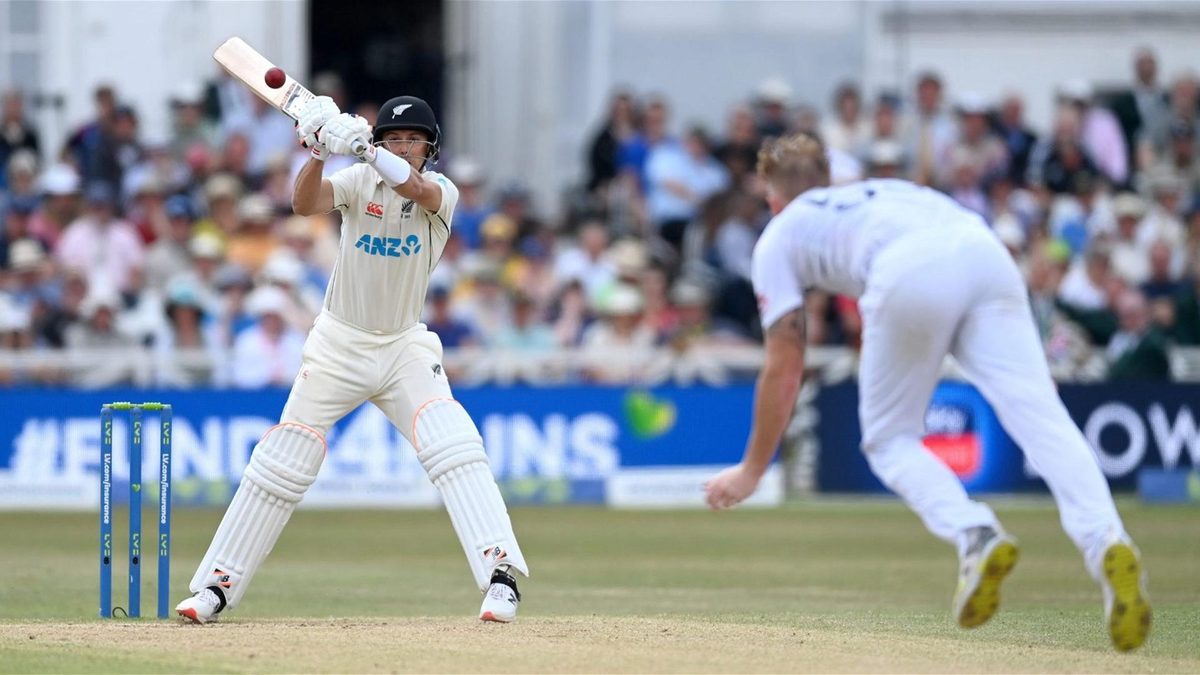
In years to come, when people recall this wonderful Test match, the passage of play on the final morning probably won’t be what’s discussed first.
Those honours will go to England and New Zealand’s twin first-innings centurions, to James Anderson’s 650th, to whoever takes the headline in the chase. But it was a quietly pivotal passage of play. It began with New Zealand 224-7, leading by 238. Had England taken three in three, they would have needed 2.75 runs per over. By the time Trent Boult smashed Anderson to Stokes at mid-off, the lead had swelled to 298, with England needing more than four an over. Wickets eight, nine and 10 had contributed 71 runs. If England lose by a handful, it deserves to be remembered.
England began the day with Stokes operating in tandem with Jack Leach, their two least threatening bowlers the previous day. Stokes tested Matt Henry again and again with the short ball. There was no slip. The plan was telegraphed, and while there were plenty of gasps and hands on mouths as Henry swayed and ducked, there was also a pair of crunched boundaries off the back foot. Henry eventually fell to a Stuart Broad short ball, but that doesn’t mean the plan had worked; if all you are bowling is bouncers, a batter has to get out to one eventually.
Still, there was an argument to be found for England’s tactics in the first 11 overs: sit in until the new ball and then nip out whoever’s left. And with two wickets falling for 26 runs in that time, arguably, it worked, even with every over bowled eating into England’s chasing allocation.
But when that new ball became available, England were hesitant to take it. Between overs 81-83, when the new ball was available but unused, New Zealand’s last-wicket pair smashed 25 runs against the old one, including a couple of battered short balls off Boult’s bat, the left-armer having earlier nudged the couple that made him the highest scoring No.11 in Test history. New Zealand edged ahead. Once the new ball was taken, Boult survived just two more balls before falling, even if it was in un-traditional fashion.
This will be a familiar story to England fans. Presumably, there is analysis and data that tells England’s bowlers that bowling at the top of off with a few slips in, the thing that works for the top seven, won’t get out those supposedly less good at batting, and that going short and funky is the best method. But it’s not hard to find examples of it failing. Think back to Lord’s last year against India, when the tourists began the last day effectively 154-6, and England took the new ball immediately. With a score to settle after Jasprit Bumrah had peppered Anderson with a series of bouncers from 20 yards, Mark Wood and co. tried to bump the tail out, and got smashed into the stands. India eventually declared just before lunch, setting England 272 to win. They lost by 151 runs.
The trend is visible in the stats. England are good at bowling at the top and middle order, averaging 33.85 when bowling to break partnerships 1-6 since the start of 2018, with only South Africa and India ahead of them among regular Test sides. Against wickets 7-10, England are the worst in the world, barring Ireland, Afghanistan and Zimbabwe, averaging 22.19 per wicket.
Whether that costs England at Trent Bridge remains to be seen. But in this new era of aggression and creativity, could it be that some old-school virtues are what England need when bowling to the tail?








